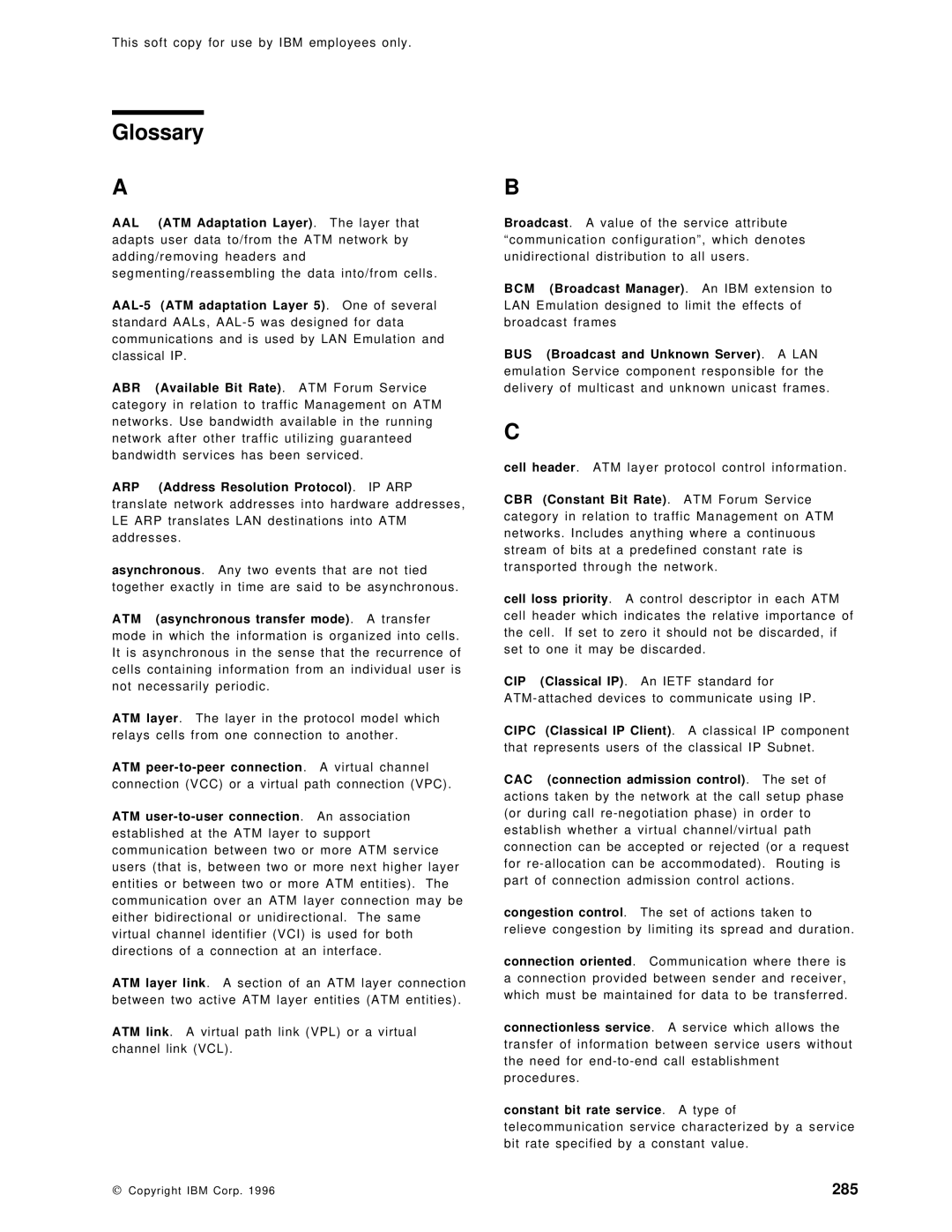This soft copy for use by IBM employees only.
Glossary
A
AAL (ATM Adaptation Layer). The layer that adapts user data to/from the ATM network by adding/removing headers and segmenting/reassembling the data into/from cells.
ABR (Available Bit Rate). ATM Forum Service category in relation to traffic Management on ATM networks. Use bandwidth available in the running network after other traffic utilizing guaranteed bandwidth services has been serviced.
ARP (Address Resolution Protocol). IP ARP translate network addresses into hardware addresses, LE ARP translates LAN destinations into ATM addresses.
asynchronous. Any two events that are not tied together exactly in time are said to be asynchronous.
ATM (asynchronous transfer mode). A transfer mode in which the information is organized into cells. It is asynchronous in the sense that the recurrence of cells containing information from an individual user is not necessarily periodic.
ATM layer. The layer in the protocol model which relays cells from one connection to another.
ATM
ATM
ATM layer link. A section of an ATM layer connection between two active ATM layer entities (ATM entities).
ATM link. A virtual path link (VPL) or a virtual channel link (VCL).
B
Broadcast. A value of the service attribute ªcommunication configurationº, which denotes unidirectional distribution to all users.
BCM (Broadcast Manager). An IBM extension to LAN Emulation designed to limit the effects of broadcast frames
BUS (Broadcast and Unknown Server). A LAN emulation Service component responsible for the delivery of multicast and unknown unicast frames.
C
cell header. ATM layer protocol control information.
CBR (Constant Bit Rate). ATM Forum Service category in relation to traffic Management on ATM networks. Includes anything where a continuous stream of bits at a predefined constant rate is transported through the network.
cell loss priority. A control descriptor in each ATM cell header which indicates the relative importance of the cell. If set to zero it should not be discarded, if set to one it may be discarded.
CIP (Classical IP). An IETF standard for
CIPC (Classical IP Client). A classical IP component that represents users of the classical IP Subnet.
CAC (connection admission control). The set of actions taken by the network at the call setup phase (or during call
congestion control. The set of actions taken to relieve congestion by limiting its spread and duration.
connection oriented. Communication where there is a connection provided between sender and receiver, which must be maintained for data to be transferred.
connectionless service. A service which allows the transfer of information between service users without the need for
constant bit rate service. A type of telecommunication service characterized by a service bit rate specified by a constant value.
Copyright IBM Corp. 1996 | 285 |
